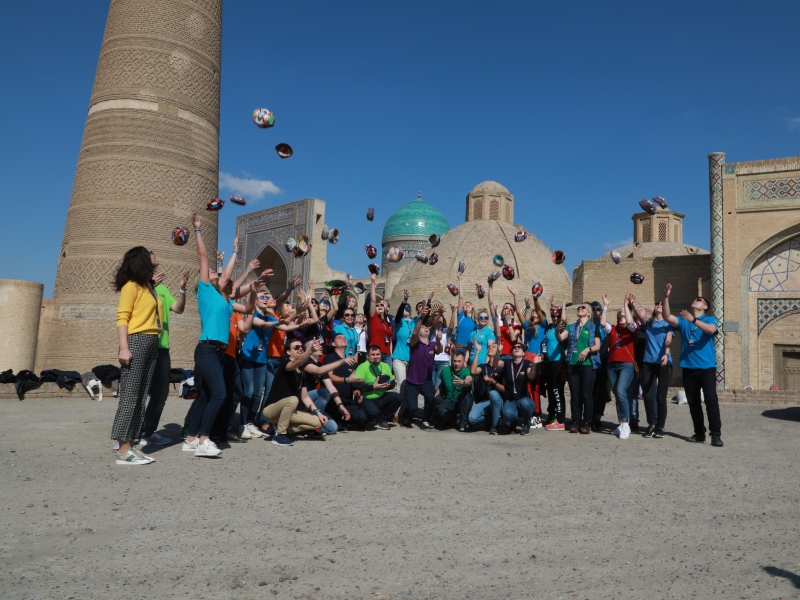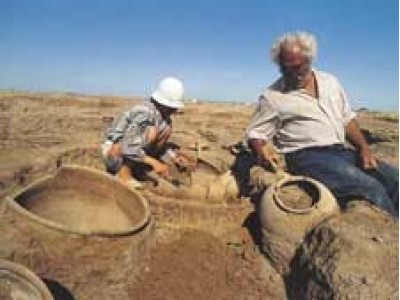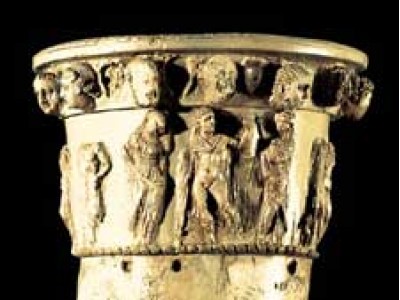
Writing about Turkmen history, it would be appropriate to speak first of the history of Turkmenistan where Turkmen currently live. Archaeological excavations show that people lived at the territory of today"s Turkmenistan already 3,000,000 years ago. Scientists think that the Caspian Sea, which formerly was much lager than it is now, began to dry up and recede and this process resulted in the birth of the Kara-Kum desert. In those ages particularly in the Neolithic age, agriculture was prevalent in the Southern Turkmenistan while cattle-breeding and fishing were developed in the North. From relics found in the Togalak-Depe, Chopan-Depe and Geok-Depe areas, it appears that the first human settlement in Turkmenistan occurred between 7,000 and 5,000B.C. Turkmen people created a wonderful world of art in which their history, mode of life, religious beliefs and thoughts were incarnated.
Sculpture is one of the ancient kinds of the fine arts. Having appeared in the Neolithic period it underwent difficult and multi-stage period of development. Nature worship, magic rites - these were conditions under which the ancient Neolithic art of ancestors of Turkmen was formed.
In the 6th century B.C. the territory of the modern Turkmenistan was conquered by the Pesian Dynasty of Akhaemenids. In the 4th century B.C. the southern part of the modern Turkmenistan was conquered by the troops of Alexander the Great. In the middle of the 3d century B.C., Macedonian rule was over and was replaced in 247 B.C. by the state of Parthia. The Royal Residence of the Parthian State was located in the Old Nyssa. Taking advantage of Turkmenistan"s good position on the Great Silk Route, the Parthians had conducted an active economic and commercial life and established cities. During the regime of the King Mithridat I, the first Parthian coin (called "Drahma") was minted in silver. Horn-shaped ivory rhytons (vessels), marble statues and silver figurines of the ancient Greek Gods were found during the excavations at the Old Nyssa. The Parthian culture itself was a synthesis of the Greek and Oriental cultures. In the context of agriculture which was considerably developed in the Parthian period wheat, barley, corn (maize), rice, cotton and various fruits were grown. One of the most important features of the Parthian age was the use of the Aramaic script. The Parthian State which lasted for 470 years, collapsed in 224 A.D.

 Centralasia Adventures
+998712544100
Centralasia Adventures
+998712544100







